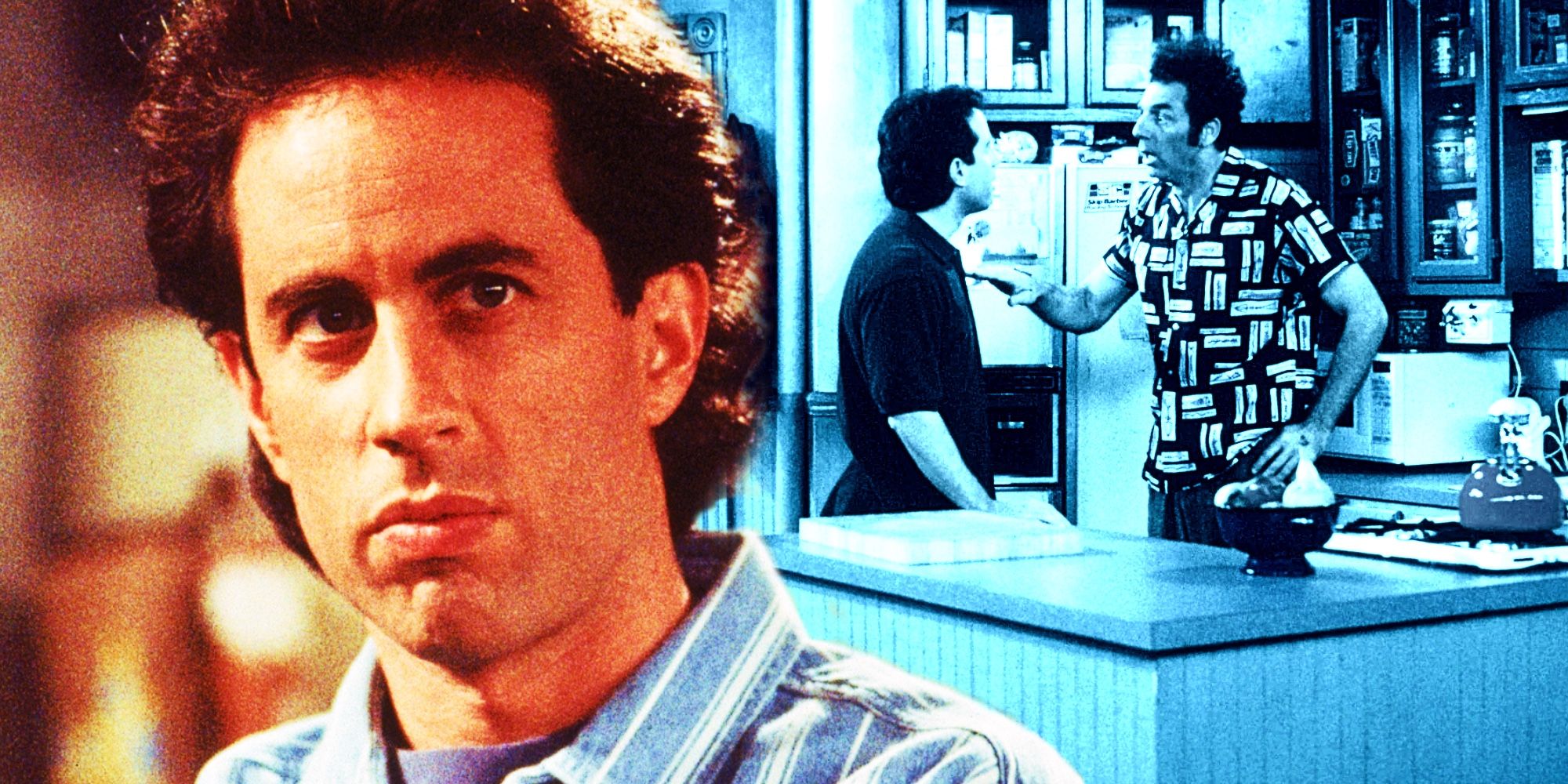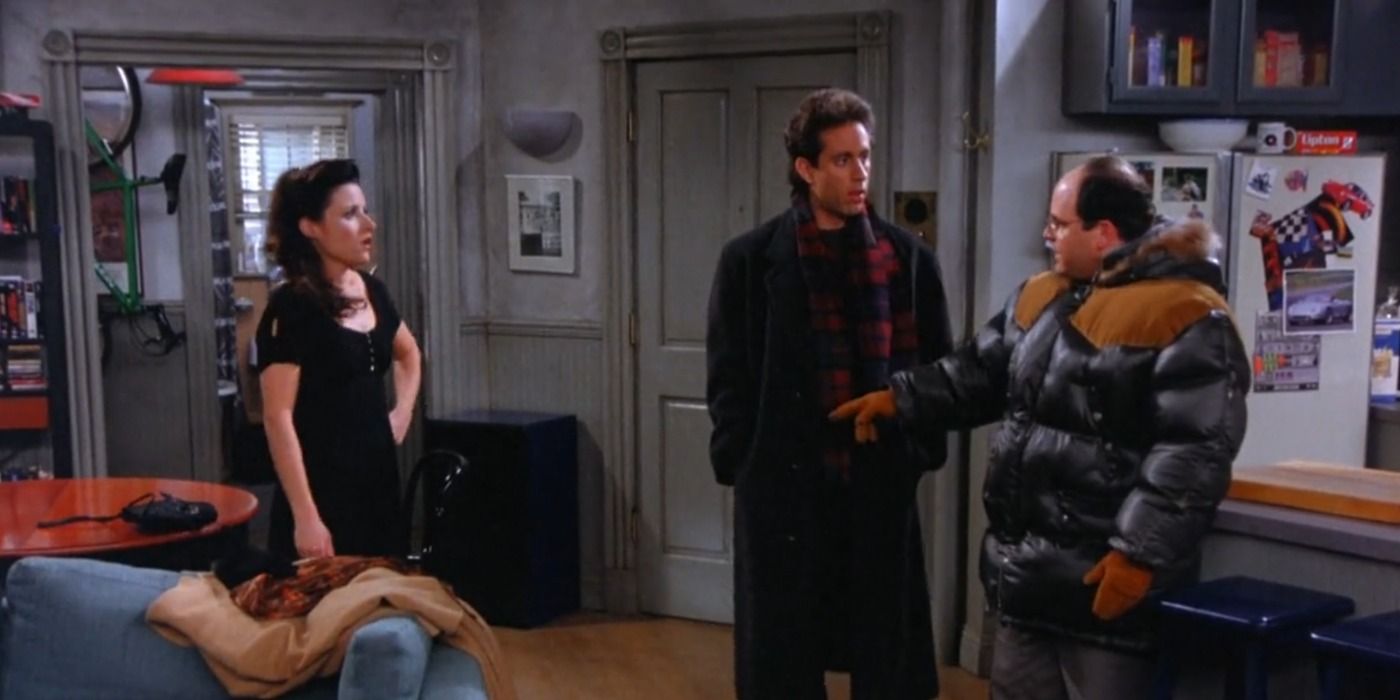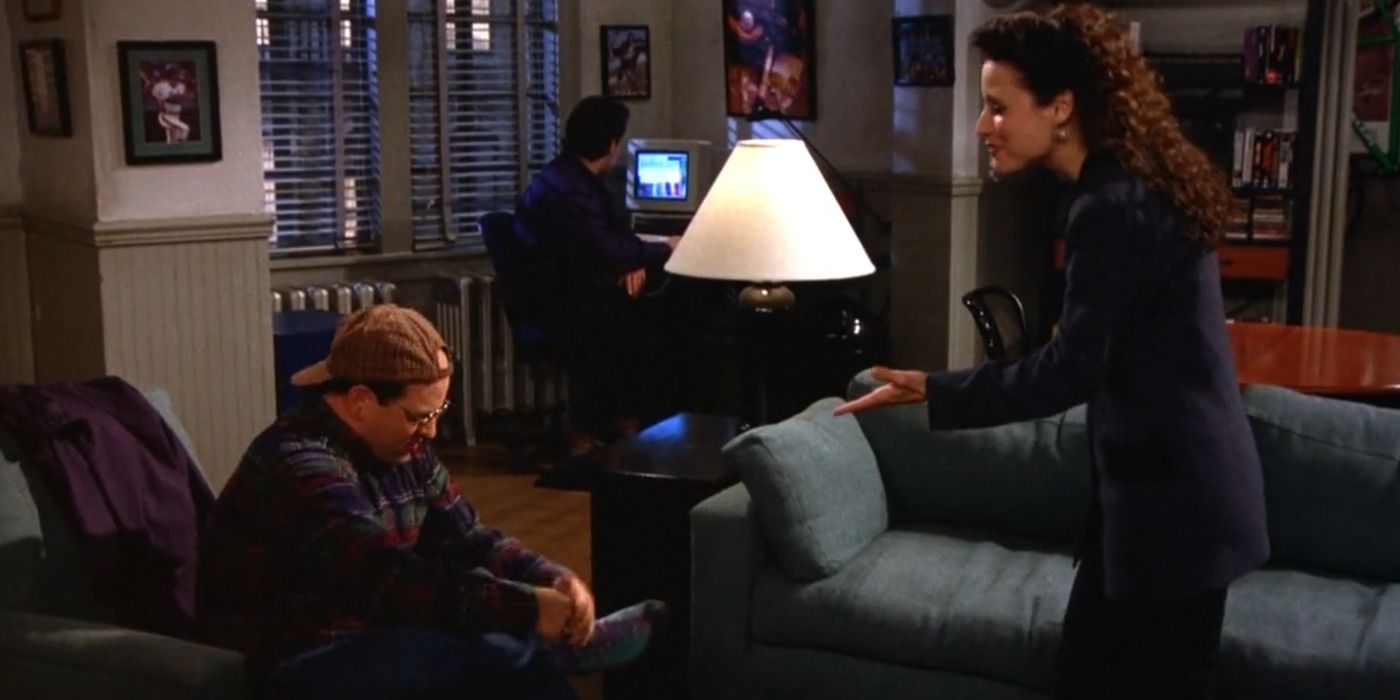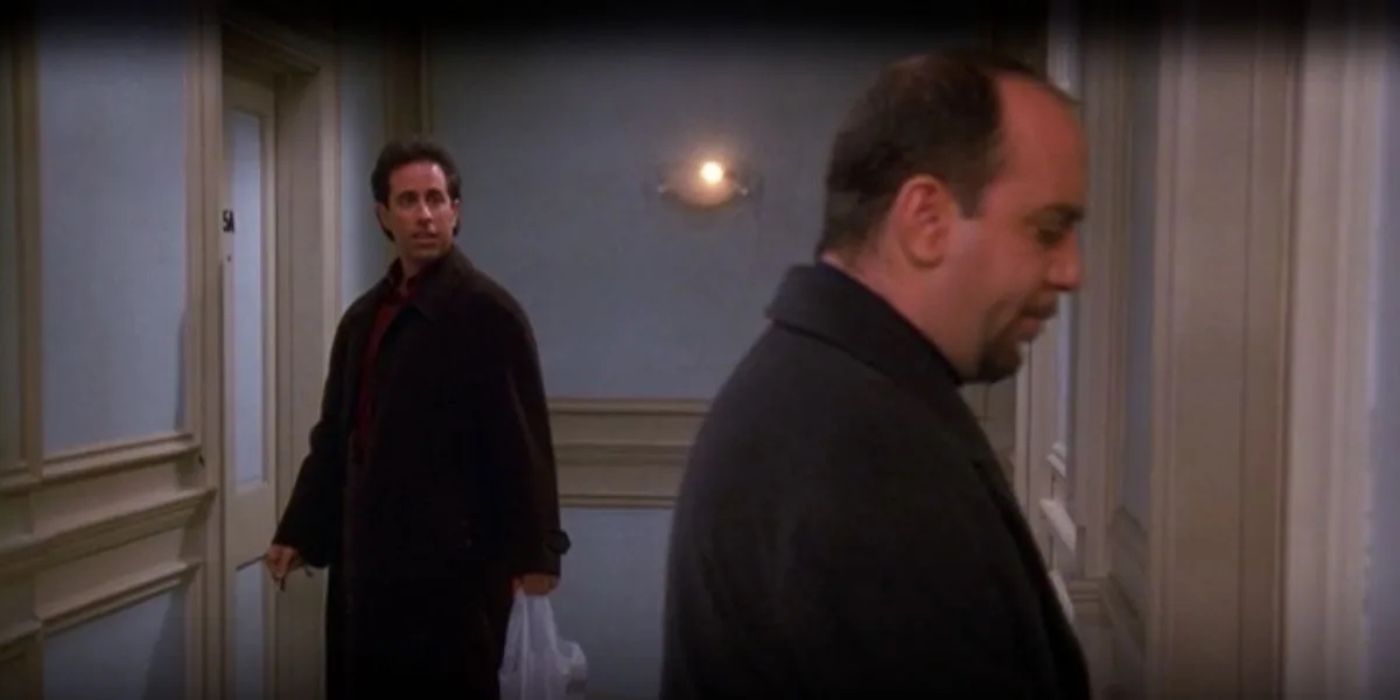Jerry’s apartment in Seinfeld seems to be a structural anomaly, as a popular theory reveals that the iconic sitcom location couldn’t exist in real life. While New York City-set sitcoms have long been criticized for the unrealistic nature of the characters’ apartments, these arguments are typically in terms of how they could actually be afforded, such as Monica and Rachel’s Friends apartment. However, the problem with Seinfeld’s apartment isn’t necessarily that Jerry couldn’t afford it (though Kramer is a completely different story), but that it doesn’t make sense in terms of its structural layout.
Alongside the fictional Monk’s Cafe, 129 West 81st Street, Apartment 5A has become one of the most iconic locations in sitcom history because the majority of Seinfeld took place in Jerry’s apartment. While the quirks of Jerry’s apartment layout have more commonly been conversed about in regards to his decorations with the hanging bike and revolving cereal boxes, it’s been noted over the years that his home is architecturally incorrect. Seinfeld typically only shows Jerry’s living room and kitchen, but during the rare moments that a scene takes the characters through the hallway, the layout of the apartment contradicts itself.
Perhaps understanding that Seinfeld’s popular theory holds some water, a set reconstruction made by Hulu even added a few walls and angles to the hallway in order to make the layout seem more realistic. However, this doesn’t change that what is actually seen in Seinfeld’s nine seasons tells another story about the building’s architecture. Here’s a breakdown of the inconsistencies in the structure of Jerry’s apartment and the fan theory that says Seinfeld’s location couldn’t exist in reality.
How Jerry’s Apartment Is Laid Out In Seinfeld
Seinfeld’s series primarily takes place in the open living room, dining room, and kitchen area of Jerry’s apartment. The stand-up comedian Jerry Seinfeld’s kitchen is laid against the wall to the hallway, with the apartment’s door on an angle to the left of the fridge’s wall. The diagonal wall of the door is then cut with another straight wall that leads back to Jerry’s bathroom, with his visually obstructed bedroom located directly to the left of the bathroom. While Jerry’s door is seen at an angle from inside of his apartment, it’s always shown in a straight line with the hallway from the exterior, where it directly parallels Kramer’s door on the other side of the hall.
Jerry’s Apartment Can’t Exist Architecturally – Seinfeld Theory Explained
According to Reddit user PixelMagic, who accompanied the theory with a model of the set, the biggest structural problem for Jerry’s apartment is the shape of the building’s hallway. When Seinfeld’s classic episodes take place in the hall, it’s a straight line all the way down around the border of his apartment until it ends at his front door. However, the interior of Jerry’s apartment would suggest there's an angle in the hallway once passing the exterior of his kitchen to reach his front door. As such, there’s absolutely no way that the hall could exist without any angles in the hallway between Jerry and Kramer’s apartments.
The layout of Jerry’s kitchen also reveals that the wall for his refrigerator would extend too far into the hallway for anyone to walk past it, meaning Jerry and Kramer’s only exit from the building would be their fire escapes. Not to mention that Jerry’s bedroom physically makes no sense, as the bedroom would be extending outside of the building far beyond the end of the hallway by Kramer's Manhattan apartment as well as on the other side of the building by Jerry’s living room windows. Even worse is the area of Jerry’s apartment on the other side of his stove and oven that is rarely ever seen, as it directly contradicts certain Seinfeld hallway layouts that would suggest a perpendicular hall is running right through it.
The issues with Seinfeld’s hallway designs also render the physical placement of Jerry’s neighbor Gabriel’s apartment impossible. When Jerry discovers that Gabriel lives on the same floor as him, they both enter their apartments from the same hallway path to reveal that Gabriel lives right next door to Kramer. However, Seinfeld’s apartment theory reveals that Jerry’s kitchen would have made it impossible for any other units to access the end of the hall let alone see Jerry and Kramer’s front doors. It seems that no matter how Jerry’s 129 West 81st Street apartment is looked at or rationalized, its existence as an architectural layout is always self-contradictory. Thankfully, Seinfeld didn’t show too much of Cosmo Kramer’s apartment blueprints, otherwise, the reality of their building would inevitably be warped even further.
Considering how popular the theory about Jerry’s apartment became, it’s not surprising that the fact-checking website Snopes did some investigating of their own. The research by the fact-checkers concluded that Jerry’s apartment truly is physically impossible in the real world, but they mention that once it's accepted that an audience is also sitting along the missing wall, a magical hallway shouldn't be too much of a stretch. In a world where Cosmo Kramer is able to live right across the hall with absolutely no confirmed source of income for the vast majority of the series, Seinfeld’s outrageous universe may be able to account for a reality-defying apartment layout.
Does Jerry’s Impossible Apartment Ruin Seinfeld’s Realism?
While the physical impossibility of Jerry’s apartment makes Seinfeld’s hallway scenes less realistic, it doesn’t necessarily make the show any less believable. Additionally, Seinfeld’s apartment layout went through numerous changes throughout the sitcom’s nine seasons, with the issue likely being due to different hallway sets or on-location difficulties. In earlier hallway shots from Seinfeld season 2, the hallway is long and seems to reveal that Jerry’s kitchen would be far too wide to actually exist. On the other hand, the hallway scenes from Seinfeld season 9 reveal a perpendicular hall that would run along the missing wall where the interior is filmed from. However, this still doesn’t solve the realism of Jerry’s apartment, as the extruding kitchen and angled doorway still have no explanation within Seinfeld’s universe. The only real downside is that no building will ever be able to accurately replicate Jerry’s apartment, the hall, and Kramer’s unit without revealing the truly unrealistic nature of Seinfeld's iconic location.




